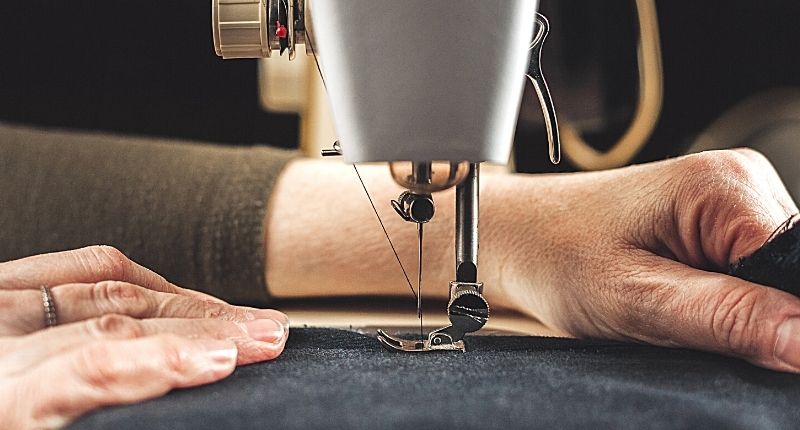In recent years, weighted blankets have surged to the top of many comfort enthusiasts’ bucket lists; and for a good reason.
Weighted blanket benefits include lowering blood pressure, improving sleep quality, and soothing those with special needs, particularly those with sensory processing disorder or autism.
Unfortunately, commercially produced weighted blankets can run from $50-$250.
By crafting your own weighted blanket, you’ll save money and have much more control over the fine details within the blanket, like weight, insulation level, and fabric choice.
Materials Needed
To make a weighted blanket, you will need the following:
- Scissors
- Ruler
- Fabric Marking Tool
- Sewing Machine
- Pins
- Thread
- Fabric (for the front and back)
- Plastic Filler Beads
Weighted Blanket Instructions
Making a weighted blanket is recommended for intermediate sewers due to the risks of working with the plastic filler beads.
Exercise caution when giving a weighted blanket to young children, as they can be choking hazards.
Follow these easy steps to have your weighted blanket made within a couple of hours.
Determine How Large and Heavy the Blanket Will Be
Each fabric square on the blanket should be three to five square inches. Your final blanket size should be a multiple of your square size, plus four inches for the edges.
Keep in mind that a weighted blanket doesn’t have to be as big as a comforter. It should only comfortably cover you.
Thinking about the distance between your chin and heel should be about the right length.
For those who want a half blanket for just their waist and legs, taking the chin to heel measurement and dividing by two should be about the correct measurement.
Generally, weighted blankets should be about 10% of your weight. Convert 10% of your body weight into ounces and subtract the weight of the fabric you are using.
This will be the amount of weight you will need to put in each square.
Sew the Back and Front of the Blanket
First, mark two inches from each side of the fabric using a fabric marking tool. Then, mark a grid of squares based on the square size you choose.

Sew the front and back pieces together along the two long sides and one short side with a ⅜ inch seam allowance. There should be an open top.
Turn the blanket inside out and topstitch ¼ inch from the side, starting close to where the open side is. Start two inches from the open side, sew along the previously marked lines.
Sew along the long sides and short sides. Backstitch at the beginning and end.
Sew the Vertical Channels
Begin stitching just over the line 2 inches from the inner topstitching at the closed bottom edge.
End barley over the 2-inch marking. Backstitch at the beginning and end.
This will complete one row of vertical channels.
Stuff with Weighted Beads
Measure out the correct weight of plastic weighted beads into a measuring scoop and place these beads within each vertical channel created in the previous step.
Shake the blanket to distribute the beads evenly along the channel.
Close the Channels
Using pins, mark a horizontal line above the vertical channels.
Sew the marked horizontal line beginning over the line of stitching over the inner topstitching and ending over the inner topstitching on the other side.
Don’t forget to backstitch at the beginning and end.
Repeat sewing vertical channels, filling them, and closing them until the entire blanket has been filled.
Stitch the Top of the Blanket
The horizontal sewing of the last channel should overlap with the line of inner topstitching. Fold the edges of the open side in ½ inch.
Topstitch ¼ inches away from the end beginning and ending where the topstitching started and ended.
Tips and Tricks
Here are some tips to help you in your weighted blanket crafting:

- Use a thick needle to reduce the risk of broken needles or injury.
- You can sew squares together using the patchwork method instead of marking squares. Some may find this easier to work with.
- Sewing with a smaller stitch will help the filler beads stay in place within the blanket.
- Check the blanket for holes regularly. Loose beads are not only a choking hazard for children but will be uncomfortable to sleep on if they become loose in your bed.
- The 10% body weight rule will not be ideal for everyone. Adjust the number of beads in your blanket depending on what you find to be the most comfortable.
Final Thoughts
Making your own weighted blanket should be a fast project that will give you sleep relief for a long time.
Guaranteeing that your craftsmanship is the best it can be will help the blanket last for years into the future.
The next time you don’t know what to get a family member for Christmas or their birthday, consider making a weighted blanket; they’ll thank you for it later.

